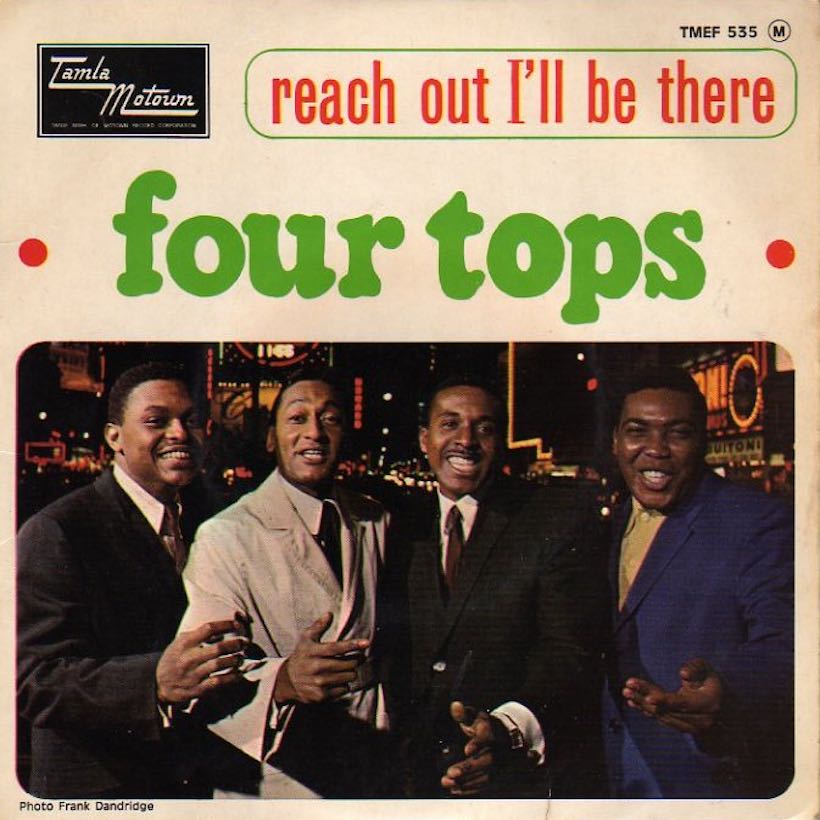October 15, 1966
- STAYED AT #1:2 Weeks
In The Number Ones, I'm reviewing every single #1 single in the history of the Billboard Hot 100, starting with the chart's beginning, in 1958, and working my way up into the present.
Everyone can belt. Not everyone can belt and make it mean something. The history of belting in pop music is a weird and spotty one. Pop music -- big-business pop music that makes it its mission to land at #1 on the Hot 100 -- is usually clean and sharp and controlled. Start shouting too loud and you might chase people away. But American pop music is rooted in R&B. R&B is rooted in gospel. And so pop musicians will sometimes, consciously or not, call back to that gospel past and just let their voices rip.
That tendency takes a lot of different forms. For Michael Bolton, who hit #1 twice and who once had a minor hit with a cover of "Reach Out I'll Be There," that belt-it-out voice was his entire reason for being. It was both a flex and a signifier of authenticity; this white guy, we were supposed to think, got a pass on singing all these old soul songs because he meant them. For the Guess Who's Burton Cummings, who hit #1 with "American Woman" in 1970, belting was an expression of venom, of disgusted anger. For Mystikal, the guest-rapper on Joe's 2000 #1 "Stutter," that raw and shouty voice was a vessel for barely-contained energy. There are plenty of other examples, too -- singers who had one reason or another to wail as hard as they could.
Levi Stubbs was always a shouter. A natural baritone, Stubbs sang in higher registers because it cranked up the raw intensity in his voice. And on "Reach Out I'll Be There," a song that the Four Tops considered a throwaway before Motown boss Berry Gordy decided to release it as a single, Stubbs threw that shout into overdrive, hammering every line and always sounding like he's teetering on the brink of losing his voice entirely. He's using that voice to convey urgent, voracious need.
Holland-Dozier-Holland, the ace Motown songwriting and production team, apparently told Stubbs to sing like Bob Dylan on "Like A Rolling Stone." As singers, of course, Dylan and Stubbs were nothing alike. But you can hear little bits of Dylan's elocution in the way Stubbs brays those lines: "Now if you feel that you can't go on / Because all your hope is gone." Those weird emphases are gospel and Dylan all at once, and they give us the idea that this guy is absolutely bursting with feeling, like the light in his soul is about to explode his entire physical form.
If you could somehow remove Stubbs' voice from "Reach Out I'll Be There," it would be a deeply strange song. There's a renaissance-fest flute, a tippity-tap drumbeat that sounds like a horse trotting, an endlessly busy rubberized bassline. When the song kicks in, you can hear another connection to "Like A Rolling Stone" in the way those guitars and organs harmonize together. Holland-Dozier-Holland were pushing themselves here, coming up with a complicated but driving arrangement and anchoring it all to a massive stop-the-world chorus.
And they were free to push themselves out into the ether because they had Stubbs, who would always sound tragically and overwhelmingly human. Stubbs is telling a woman that she can count on him. She's alone in the world, desperate, looking for solace. He's saying that he's it, he's that solace. But he doesn't sound like a dependable figure, a rock. He's trapped in the storm himself, thrashing around, looking for some kind of hope or respite. He wants someone to be there for him, so he's promising to be there for someone else. The song wouldn't mean half as much if Stubbs sounded cool or composed. He needs to be lost, frightened, damaged. That's why it's romantic. That's why it's perfect.
GRADE: 10/10
BONUS BEATS: Levi Stubbs found a very different way to express overwhelming need when he played the voice of the monster plant Audrey II in the 1986 movie Little Shop Of Horrors. Here he is, singing "Feed Me Seymour":






